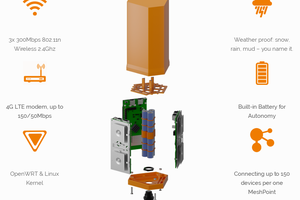WARNING! Lots of terms, and jargons used! Exercise due research, Google is your friend! Also, I just started learning about this, so I may need citation in some parts. Kindly post a comment so I can update the writeup if necessary ;-)
Intro
The WiFi Sniper is a device that I put together based on a project I saw on Hackaday.com. The use case for this device is trivial, and somewhat illegal. This may also pose some health issues due to the concentration of the signal, and excessive amounts of radiation transmitted by this device as specified in OET 65. Prolonged use is not recommended.
The WiFi Sniper does not only look menacing, but it actually performs as good as it looks. Similar to Sniper Rifles, the WiFi Sniper has a 6x24 sniper scope for precisely pointing the antenna at an access point. A 2000mW ALFA AWUS036NH WiFi card, and a 4000mW WiFi amplifier drives the modified 25dBi Yagi-Uda antenna. This computes to 25dBi + 36dBm (4000mW) = 61dBm EIRP which is above the legal EIRP limit for commercial use of around 30dBm (1000mW) in most states, and around the world.
To demonstrate how powerful this device really is, it is unable to detect access points that are up to 10 yards away as it drowns out the signals sent out by the access point when directly pointing the antenna to it. I was only able to detect my access point by temporarily blocking the antenna with my body, and reads out 100% RSSI (Received Signal Strength Indicator) at -1dB. In addition, it detects access points approximately 30 yards away (through a wall or two and a couple of steel fences), and still be at least 70% to 80% RSSI and somewhere between -24dB to -36dB!
 TacticalNinja
TacticalNinja




 Valent Turkovic
Valent Turkovic
 Fabio Balzano
Fabio Balzano
 Arya
Arya
 Chad Grant
Chad Grant
so what do u use it for?